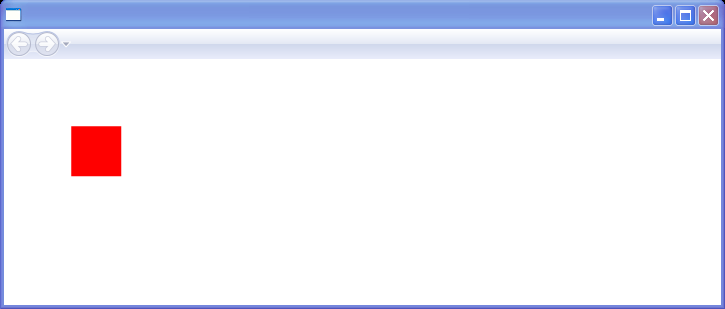<Page x:Class="Microsoft.Samples.PerFrameAnimations.FrameIndependentFollowExample"
xmlns="http://schemas.microsoft.com/winfx/2006/xaml/presentation"
xmlns:x="http://schemas.microsoft.com/winfx/2006/xaml">
<Canvas x:Name="containerCanvas" Background="Transparent">
<Rectangle x:Name="followRectangle" Canvas.Left="0" Canvas.Top="0"
Fill="red" Width="50" Height="50" />
</Canvas>
</Page>
//File:Window.xaml.cs
using System;
using System.Windows;
using System.Windows.Controls;
using System.Windows.Data;
using System.Windows.Documents;
using System.Windows.Media;
using System.Windows.Navigation;
using System.Windows.Shapes;
using System.Windows.Media.Animation;
namespace Microsoft.Samples.PerFrameAnimations
{
public partial class FrameIndependentFollowExample : Page
{
private Vector _rectangleVelocity = new Vector(0, 0);
private Point _lastMousePosition = new Point(500, 500);
private TimeSpan _lastRender;
public FrameIndependentFollowExample(): base()
{
_lastRender = TimeSpan.FromTicks(DateTime.Now.Ticks);
CompositionTarget.Rendering += UpdateRectangle;
}
private void UpdateRectangle(object sender, EventArgs e)
{
RenderingEventArgs renderArgs = (RenderingEventArgs)e;
Double deltaTime = (renderArgs.RenderingTime - _lastRender).TotalSeconds;
_lastRender = renderArgs.RenderingTime;
Point location = new Point(0,0);
Vector toMouse = _lastMousePosition - location;
double followForce = 1.00;
_rectangleVelocity += toMouse * followForce;
double drag = 0.9;
_rectangleVelocity *= drag;
location += _rectangleVelocity * deltaTime;
Canvas.SetLeft(followRectangle, location.X);
Canvas.SetTop(followRectangle, location.Y);
}
}
}
